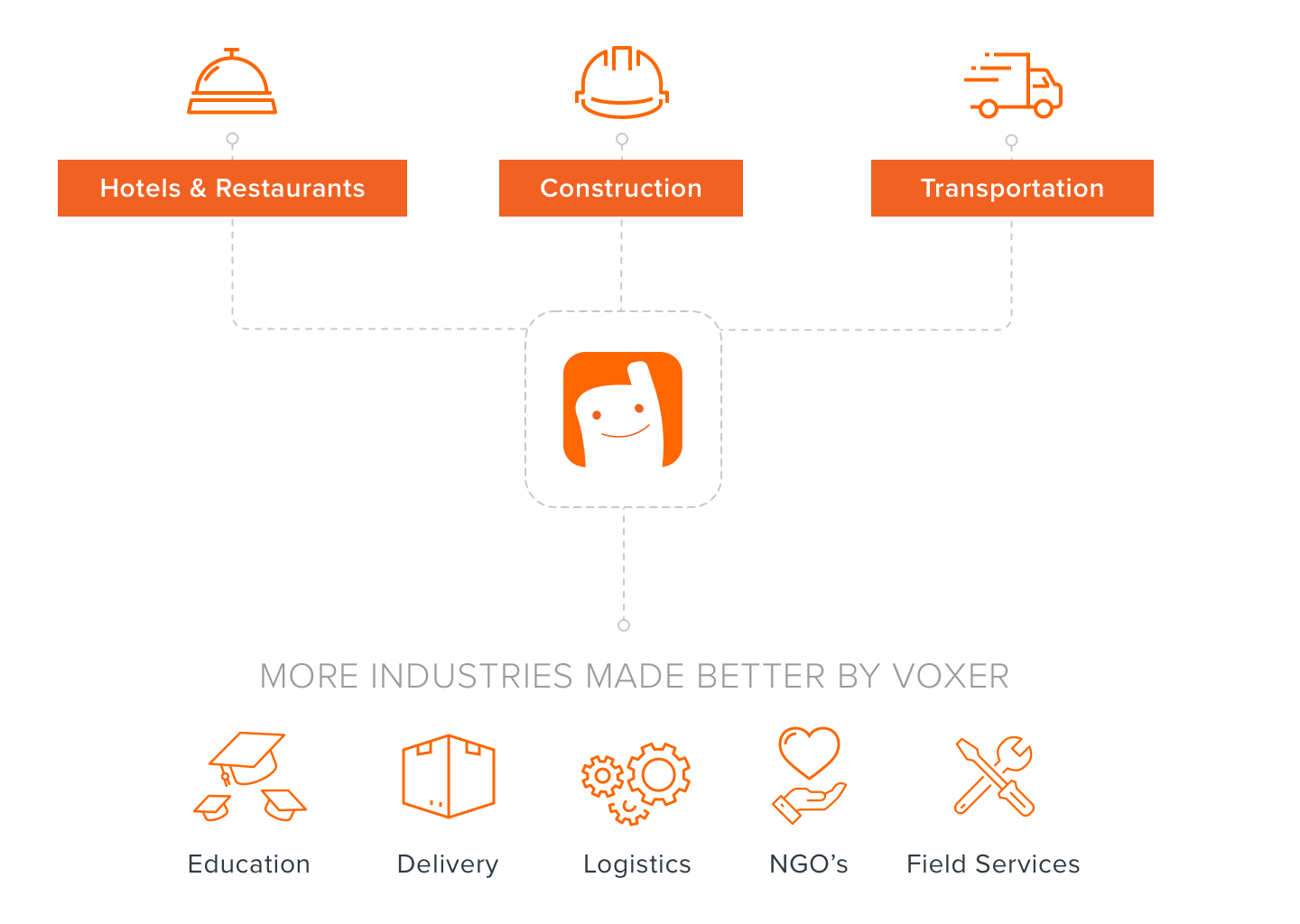Working cohesively is crucial no matter what kind of industry you work. It’s undeniable for anyone who has ever worked apart in a distributed workforce. As a team member or manager, it can be challenging to collaborate when communication is spotty, lacking or absent. It might not be news to you, but you don’t need to over-communicate to communicate effectively. With the right tools in place, you can combat those challenges and allow your team’s productivity to skyrocket.
So, if you’re ready to take your operation to the next level, join us as we explore the game-changing effects that are helping distributed workforces breakthrough to the forefront. When we’re through, you’ll have a much better understanding of ways to improve communication and boost productivity.
To jump ahead to any section you find most relevant you can click on the links below:
Why a Distributed Workforce
Furthermore, with the right tools, your team will be able to see their productivity soar. Allowing your team to roam freely it will increase their overall happiness which will trickle down to how productive they’re throughout their workday. Now, we know for some distributed workforces, a little management is necessary. For instance, if you run an electrical company. You’ll likely, have a deskbound dispatcher at your headquarters. While they assign on-location jobs to technicians.
Not sure that your company would work well as a distributed workforce? Or not sure how these two are related? If so, here is a little bit about what we mean:
On-Location: Workers are on the go and tend to work in many locations in one day or over a period of time. For example, plumbers might work multiple jobs in one day. While a construction crew might spend two months on-premise before moving onto a new project.
Why do these tactics work? Well here, are a few reason’s of what it can do for your business
Less Money: The obvious reason would be that you’ll no longer have to spend a ton of money on office space. You can spend those extra funds to hire additional employees, give extra perks to your team or allot money for marketing.
More Time: Your employees with undoubtfully be more happier at work when they spend less time with menial tasks and put their best foot forward. Distributed workforces tend to be better focused and have more time on their hands, especially if given incentives to get that task completed efficiently.
Better Customer Satisfaction: When your team is happier your customers will notice. Excitement is contagious. Now that you have a little extra in savings in your pocket and more time to spare, your customers will reap the benefits.
How Does Your Team Communicate
Here is why long-range two-way radios don’t make the grade:
Clunky and Cumbersome: Nowadays, most work has moved online. Walkie talkies are slowing becoming a thing of the past as walkie talkie apps are on the rise. You wouldn’t want you, doctor, to rely on keeping all your medical records in a file folder behind the front desk, now would you? The same goes for your team’s communication. You wouldn’t want your team to rely on an older and unreliable system when you need to race to resolve your customer’s problems at a moment’s notice.
Don’t Elevate Your Potential: When you don’t allow your team to take advantage of existing technologies you will not allow your team to thrive. Communication is the backbone of all successful companies. Therefore, it is absolutely essential to modernize your tools to allow your business to bud like the beautiful rose it is.
Costly to Replace and Repair: We don’t need to tell you how expensive it is to replace or repair a tradition two-way radio. These old-school radios cost upwards of $400 apiece. And that is at the low range. Times that by 50 employees and you’ve already set yourself back $20,000. Just think, migration to a cloud-based tool like an audio messaging app could save your business a solid chunk of change.
Backward in Time: Traditional walkie-talkies have had their place in plenty of industries. From construction, field services to hospitality. Any distributed workforce you can think of benefits from walkie talkies. Yet, they don’t leverage the existing infrastructure. They make it ineffective to communication when your signal is weak, the sound is garbled and you lack service. Essentially, it can make it impossible to do one’s task or stay connected.
Don’t Drive Growth: If you are trying to unlock your business’s true potential and increase profitability you will not want to hang on to traditional modes of communication that no longer serve you. If you are trying to expand your team you’ll want a tool that doesn’t consistently break or take effort to repair.
What is an Audio Messaging App?
Your business may have been using traditional long-range two-way radios for years – believing it’s the most reliable option. We are here to tell you that this isn’t the case. From being unreliable to added clunkiness to employees missing messages consistently. To work efficiently, your team needs to be armored with the best technology.
An audio messaging app works just like an old-school walkie talkie. You just push to talk. But, unlike traditional radios, all messages are recorded, saved and stored. Best of all it is outfitted with an array of multimedia options such as texting photo sharing and videos. It can be deployed over WiFi or cellular data. If your team is in a place that lacks connectivity – messages that are recorded will be stored and sent as soon as connectivity is restored.
Collaboration Through Communication Will Enable Productivity to Soar
Communicating effectively to maximize your team’s collaboration will unleash your business’s true potential. There is a strong link between productivity and communication. So much so, that even one study concluded that organizations with connected employees saw their productivity improve by as much as 25 percent. Amounting to roughly $1.3 trillion in annual revenue.
You will want to develop an action plan to implement throughout your organization as this impact will add exponential value to your business. Here are some of the key ties to why collaboration within your team will help boost productivity.
– Set expectations from the get-go, align goals and create a feedback loop
– Praise employees for hitting milestones
– Push independence and allow employees to be accountable
– Generate more time by creating a guide to limit repetitive inquiries from your team
How to Improve Productivity
Clear Communication: Developing a sound strategy where your distributed workforce can chat throughout the day will be instrumental in boosting your team’s morale and upping their productivity game. We may have already mentioned this one or two times, but having a rapid and reliable source for communication like an audio messaging app will be essential to dividing and conquering your customers. Not only is it imperative that your team is on the same page, but your customers will notice. As you will be able to provide them with undivided attention when on-site.
Invest in Training the Right People: Sorting through a list of candidates that fit well with your company’s culture will strength rapport. Engraining teamwork amongst your distributed workforce will create a sense of comradery.
Customer Engagement: Without customers, you won’t have a business. So, you’ll want to ensure your customers are your number one priority. We cannot stress how important the journey of the customer will make or break your chances of nabbing a reoccurring customer.
Fascinate and Connect Your Team: As much as you’d want to make sure you have reoccurring customers, you’ll want to make sure your team shows up for work the next day. It’s not always effortless to create an atmosphere where employees want to show up to work day-in-and-day-out. Motivate and aligning your team towards the same goals. Giving them new opportunities for growth will not only revitalize them but help to ensure they stay with your business for the long haul.
Team Collaboration Tools for Distributed Workforces
Like a well-oiled machine, you want your team to work to facilitate high-quality work and accomplish tasks on time. To work in tandem you’ll need to ensure that your team’s communication and means for collaboration works in unison to increase productivity.
Zoom: Perfect for scheduling meetings with customers or to check in with your entire team. You simply share your personal meeting room link and log in within seconds. Connect on your desktop or on your mobile device. Ideal for face-to-face interaction for your distributed team that doesn’t work at a centralized location.
Voxer: Sound communication is created and maintained when you have high-quality tools at your fingertips. With the push-of-a-button, you can relay all communication to one member of your team, your department, or your entire organization. With an audio messaging app, like Voxer you will enlist the best communication tool for your distributed workforce. Aside from sending audio messages, you can also send text, photos, and videos. Perfect for when your team member doesn’t want to take away attention from the customer but needs to check in with home base.
Asana: Time is a valuable resource and Asana makes it simple to organize, manage, and follow all tasks in one place. It helps both deskbound and distributed teams cut down their workload by delegating tasks. You can assign due dates and follow your team member’s progress daily, monthly or however, you chose. Possibilities are limitless with team collaboration through Asana.
Zapier: Adding a tool that automates mundane tasks is necessary so you can concentrate on more detailed tasks. Zapier provides shortcuts to minimize your workload. Create Zaps to integrate tools you already use frequently. Here’s what integration with Zapier, Voxer, and Asana would look like:
- Your team member completes a task
- You get an alert into your group chat in Voxer
We understand how challenging it can be to manage a distributed workforce and stay in-sync as employees work autonomously. We’re positive that by making voice communication via an audio messaging app apart of your daily communication regime your business will soar to new heights. Not only will you boost morale amongst your distributed workforce but your productivity and team collaboration will skyrocket. Your company may want to consider using an audio messaging app to change your business for the better.




